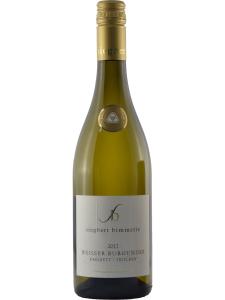Baden is the southernmost of Germany's 13 official wine regions, and also the warmest. Its relatively sunny, dry climate permits the production of good-quality Spätburgunder (Pinot Noir) and also ripe, relatively full-bodied examples of Grauburgunder (Pinot Gris) and Weissburgunder (Pinot Blanc), often in oaked styles. It is Baden's climate, and the riper, higher-alcohol wine style to which it contributes, that led the region to be classified as zone B (every other German region is in chilly Zone A) under the European Union's vineyard climate classification.
Far from the stereotypical Anbaugebiet (German wine region), Baden is best known for its red wines, although its whites account for the majority of its output. Pinot Noir rules the vineyards here; for every acre of Riesling (the dominant variety in almost every other German region), there are five of Pinot Noir. The next most commonly planted variety is Muller-Thurgau, followed by Pinot Gris and Pinot Blanc. The combined vineyard area occupied by these latter three is roughly equal to that devoted to Pinot Noir alone. Next comes Riesling, which accounts for less than 10% of Baden's vineyard area, followed closely by Gutedel (Chasselas).
The third-largest German wine region in terms of area under vine, Baden is also the most spread out. It forms a giant 'L' shape, leaning slightly to the east as it follows the Rhine River from the Bodensee (Lake Constance) to Mannheim. This section of the Rhine is far from straight; apart from its many meanderings, the river performs a sharp right-hand turn at Basel (the angle of the L), having flowed almost due west for 75 miles (120km) or so from Lake Constance. From Basel, it flows north-north-east, and is shadowed by Baden's key wine districts for a full 140 miles (225km) until reaching Mannheim. Meanderings and turns aside, the Baden wine-growing zone follows the Rhine for almost 220 miles (355km).
Baden's southernmost winegrowing zones are Bodensee (south-east) and Markgraflerland (south-west). This pair (which constitute the base of the L) are located immediately next to the wine regions of northern Switzerland, most notably Schaffhausen. This is reflected in the popularity there of Chasselas, Switzerland’s number-one white-wine grape, and in the wine styles, which are typically fresher and more restrained than those produced further downstream.
The Baden wines of most interest and complexity are produced in the 100-mile stretch between the cities of Freiburg and Mannheim, in the Kaiserstuhl, Ortenau and Kraichgau districts. Running northwards along the Rhine, these districts lie parallel to the Alsace and Pfalz regions, whose low-lying Vosges and Haardt mountains shelter the area from cold, wet, westerly winds (a key factor in Baden's temperate climate).
Naturally, soil types vary widely across such a long, sprawling region, and include keuper, loam, loess, granite, clay, limestone and sand. In the northern district of Tauberfranken, limestone is a key feature of the terroir, while vineyards in the Kaiserstuhl benefit from rich, dark, volcanic soils, and around the Bodensee, mineral-rich glacial deposits are common. This heterogeneity of terroirs, combined with climatic and cultural variations, account for the wide diversity of Baden's wine portfolio.



